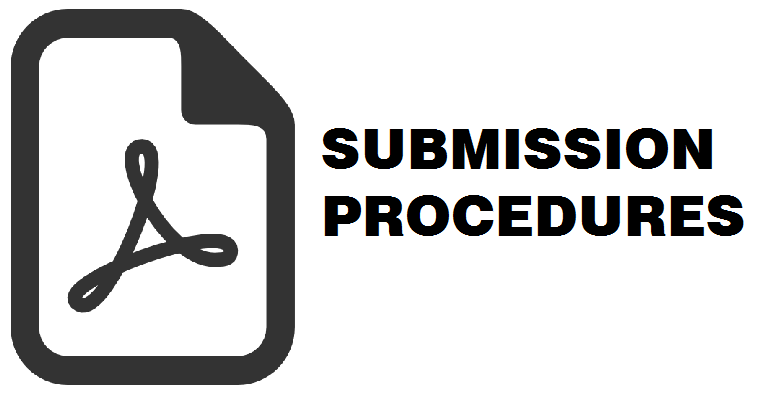Penggunaan Data Sistem Lahan Skala 1 : 50.000 untuk Pemetaan Rawan Longsor di Kabupaten Majalengka
Rastika Widiastuti(1*), Muhammad Qabus Abid Khairullah(2), Mangapul Parlindungan Tambunan(3), Muhammad Sufwandika Wijaya(4)
(1) Departemen Geografi, Universitas Indonesia, Jakarta Indonesia dan Badan Informasi Geospasial, Bogor, Jawa Barat Indonesia
(2) Departemen Geografi, Universitas Indonesia, Jakarta, Indonesia
(3) Departemen Geografi, Universitas Indonesia, Jakarta, Indonesia
(4) Badan Informasi Geospasial, Bogor, Jawabarat, Indonesia
(*) Corresponding Author
Abstract
Abstrak. Penelitian ini mencoba mengoptimalkan pemanfaatan data sistem lahan untuk mengidentifikasi daerah rawan bencana tanah longsor di Kabupaten Majalengka. Data kejadian longsor dan peta sistem lahan digunakan sebagai sumber data utama, dengan fokus meihat pola kejadian longsor pada setiap unit sistem lahan. Metode analisis tumpang susun antara peta sistem lahan dan data kejadian longsor dikombinasikan dengan analisis geomorfologi digunakan untuk mengklasifikasikan tingkat kerawanan longsor. Hasilnya menunjukkan bahwa wilayah dengan sistem lahan Tanggamus, Gamnokora, dan Talamau memiliki tingkat kerawanan paling tinggi, sementara wilayah dengan sistem lahan Maput, Cipancur, dan Bukit Balang memiliki tingkat kerawanan sedang. Kelas kemiringan lereng digunakan untuk mendetilkan kelas kerawanan longsor pada setiap unit sistem lahan. Hasil pemetaan kerawanan longsor divalidasi dengan peta rawan bencana dari BNPB, menunjukkan persentase kesamaan sebesar 63.51%. Meskipun memiliki akurasi rendah, peta hasil dari data sistem lahan memiliki pola identik pada kelas kerawanan tinggi dan tidak rawan dengan peta referensi. Ini menunjukkan bahwa data sistem lahan dapat digunakan sebagai alternatif dalam pemetaan kerawanan longsor terutama untuk daerah dengan cakupan wilayah yang luas atau pada skala lebih kecil.
Abstract. This research aims to optimize the utilization of land system data used to identify areas susceptible to landslide hazards in Majalengka Regency. Landslide occurrence data and land system maps are used as the main data sources, focusing on landslide occurrence patterns in each land system unit. An overlay analysis method between land system maps and landslide occurrence data combined with geomorphological analysis is used to classify the susceptibility levels to landslides. The results indicate that areas with Tanggamus, Gamnokora, and Talamau land systems have the highest susceptibility levels, while areas with Maput, Cipancur, and Bukit Balang land systems have moderate susceptibility levels. Slope classes are used to detail the susceptibility levels to landslides in each land system unit. The landslide susceptibility mapping results are validated with disaster-prone maps from BNPB, showing a similarity percentage of 63.51%. Despite having low accuracy, the mapping results from land system data exhibit identical patterns in high susceptibility and non-susceptibility classes compared to the reference maps. This indicates that land system data can be used as an alternative in landslide susceptibility mapping, especially for areas with extensive coverage or on a smaller scale.
Submitted: 2024-05-14 Revisions: 2024-09-19 Accepted: 2024-10-25 Published: 2025-02-17
Keywords
Full Text:
PDFReferences
Aini, L. N., Ulfah, S. M., & Isnawan, B. H. (2019). Mapping of water catchment area using GIS in Majalengka Regency, West Java. IOP Conference Series: Earth and Environmental Science, 250(1).
https://doi.org/10.1088/1755-1315/250/1/012106
Augustine, S. (2015). Mapping the volcanic hazards from Soufriere Hills Volcano , Montserrat , West Indies using an image processor. 145, 541-551.
https://doi.org/10.1144/gsjgs.145.4.0541
Badan Nasional Penanggulangan Bencana. (2024). Data Kejadian Tanah Longsor Tahun 2024 di Indonesia. Diakses dari https://dibi.bnpb.go.id
Beier, P., & Brost, B. (2010). Uso de elementos territoriales para planificar para el cambio cliḿatico: Conservando las arenas, no los actores. Conservation Biology, 24(3), 701-710.
https://doi.org/10.1111/j.1523-1739.2009.01422.x
PMid:20067491
Bhardwaj, V., & Singh, K. (2023). Landslide Susceptibility Assessment using Remote Sensing and GIS-a Review. Journal of Mining and Environment, 14(1), 133-154. https://doi.org/10.22044/jme.2023.12580.2283
Congalton, R. G. (2001). Accuracy assessment and validation of remotely sensed and other spatial information. International Journal of Wildland Fire, 10(3-4), 321-328.
https://doi.org/10.1071/WF01031
Darman, H. (2000). An outline of the geology of Indonesia. In Indonesian Geologist Association.
Dong, A., Dou, J., Fu, Y., Zhang, R., & Xing, K. (2023). Unraveling the evolution of landslide susceptibility: a systematic review of 30-years of strategic themes and trends. Geocarto International, 38(1).
https://doi.org/10.1080/10106049.2023.2256308
Fathaya, S., Kusratmoko, E., & Saraswati, R. (2021). Characteristics of Landslide and Rainfall Areas in Majalengka Regency, West Java Province. IOP Conference Series: Earth and Environmental Science, 884(1), 0-11.
https://doi.org/10.1088/1755-1315/884/1/012054
Fish, P. R., Moore, R., & Carey, J. M. (2006). Landslide geomorphology of Cayton Bay, North Yorkshire, UK. Proceedings of the Yorkshire Geological Society, 56(1), 5-14.
https://doi.org/10.1144/pygs.56.1.5
Fu, Z., Wang, F., Dou, J., Nam, K., & Ma, H. (2023). Enhanced Absence Sampling Technique for Data-Driven Landslide Susceptibility Mapping: A Case Study in Songyang County, China. Remote Sensing, 15(13).
https://doi.org/10.3390/rs15133345
Gary Nichols. (2009). Sedimentology and stratigraphy. Blackwell Science Ltd.
https://doi.org/10.1017/S0016756898221509
Guzzetti, F., Carrara, A., Cardinali, M., & Reichenbach, P. (1999). Landslide hazard evaluation : a review of current techniques and their application in a multi-scale study , Central Italy.
https://doi.org/10.1016/S0169-555X(99)00078-1
Hall, M. L., Robin, C., Beate, B., Mothes, P., & Monzier, M. (1999). Tungurahua Volcano , Ecuador : structure , eruptive history and hazards. 1-21.
https://doi.org/10.1016/S0377-0273(99)00047-5
Hepdeniz, K. (2020). Using the analytic hierarchy process and frequency ratio methods for landslide susceptibility mapping in Isparta-Antalya highway (D-685), Turkey. Arabian Journal of Geosciences, 13(16).
https://doi.org/10.1007/s12517-020-05764-2
Irawan, L. Y., Sumarmi, Panoto, D., Pradana, I. H., Faizal, R., Devy, M. M. R., & Putra, D. B. P. (2022). The identification of flood susceptibility and its contributing factors in Sampang Regency. IOP Conference Series: Earth and Environmental Science, 1089(1), 0-9.
https://doi.org/10.1088/1755-1315/1089/1/012013
Lemenkova, P. (2020). Java and Sumatra segments of the Sunda Trench: Geomorphology and geophysical settings analysed and visualized by GMT. Glasnik Srpskog Geografskog Drustva, 100(2), 1-23.
https://doi.org/10.2298/GSGD2002001L
Liao, Z., Hong, Y., Wang, J., Fukuoka, H., Sassa, K., Karnawati, D., & Fathani, F. (2010). Prototyping an experimental early warning system for rainfall-induced landslides in Indonesia using satellite remote sensing and geospatial datasets. Landslides, 7(3), 317-324.
https://doi.org/10.1007/s10346-010-0219-7
Magliulo, P., Di Lisio, A., Russo, F., & Zelano, A. (2008). Geomorphology and landslide susceptibility assessment using GIS and bivariate statistics: A case study in southern Italy. Natural Hazards, 47(3), 411-435.
https://doi.org/10.1007/s11069-008-9230-x
Muwahhid, A., Alwi, M., Sari, S. P., Tilova, U. D. N., & Pratama, I. D. (2024). Mapping of Multiple Hazards in the Cilongkrang Mapping of Multiple Hazards in the Cilongkrang Sub- Watershed , Majalengka , Indonesia. IOP Conf. Series: Earth and Environmental Science.
https://doi.org/10.1088/1755-1315/1313/1/012028
Pyle, D., Decker, R., & Decker, B. (1997). Volcanoes, Academic Version, 3rd ed. W. H. Freeman & Co.
https://doi.org/10.1017/S0016756898221509
Radoux, J., & Bogaert, P. (2017). Good Practices for Object-Based Accuracy Assessment.
https://doi.org/10.3390/rs9070646
Rendra, P. R., & Sukiyah, E. (2019). Geology Of Silihwangi Area , Majalengka District , West Java Province. Journal Of Geological Sciences And Applied Geology, 3(2), 10-18.
Selaby, S., Kusratmoko, E., & Rustanto, A. (2021). Landslide Susceptibility in Majalengka Regency, West Java Province. IOP Conference Series: Earth and Environmental Science, 884(1), 0-11.
https://doi.org/10.1088/1755-1315/884/1/012053
Sitorus, S. R. P. (2018). A Review of Parametric and Physiographic Approaches Land Classification for Land Evaluation and Land Use Planning. Sumatra Journal of Disaster, Geography and Geography Education, 2(2), 1-8.
https://doi.org/10.24036/sjdgge.v2i2.168
Thierry, P., Stieltjes, Æ. L., Kouokam, Æ. E., Ngue, Æ. P., & Salley, P. M. (2008). Multi-hazard risk mapping and assessment on an active volcano : the GRINP project at Mount Cameroon. 429-456.
https://doi.org/10.1007/s11069-007-9177-3
Van Bemmelen, R. . (1949). The Geology of Indonesia-Volume I A, General Geology. Martinus Nijhoff.
Wielemaker, W. G., De Bruin, S., Epema, G. F., & Veldkamp, A. (2001). Significance and application of the multi-hierarchical landsystem in soil mapping. Catena, 43(1), 15-34.
https://doi.org/10.1016/S0341-8162(00)00121-1
Younger, J. S. (2019). Factors, Including Disasters, Affecting Sustainable Development-Focus on Indonesia. ICSECC 2019 - International Conference on Sustainable Engineering and Creative Computing: New Idea, New Innovation, Proceedings, 1-8.
https://doi.org/10.1109/ICSECC.2019.8907189
Article Metrics
Refbacks
- Penggunaan Data Sistem Lahan Skala 1 : 50.000 untuk Pemetaan Rawan Longsor di Kabupaten Majalengka
- Penggunaan Data Sistem Lahan Skala 1 : 50.000 untuk Pemetaan Rawan Longsor di Kabupaten Majalengka
- —
- Penggunaan Data Sistem Lahan Skala 1 : 50.000 untuk Pemetaan Rawan Longsor di Kabupaten Majalengka
- —
- Penggunaan Data Sistem Lahan Skala 1 : 50.000 untuk Pemetaan Rawan Longsor di Kabupaten Majalengka
- Penggunaan Data Sistem Lahan Skala 1 : 50.000 untuk Pemetaan Rawan Longsor di Kabupaten Majalengka
- Penggunaan Data Sistem Lahan Skala 1 : 50.000 untuk Pemetaan Rawan Longsor di Kabupaten Majalengka
- Utilization of 1:50,000 Scale Land System Data for Landslide Hazard Mapping in Majalengka Regency
- Penggunaan Data Sistem Lahan Skala 1 : 50.000 untuk Pemetaan Rawan Longsor di Kabupaten Majalengka
Copyright (c) 2025 Author and Majalah Geografi Indonesia

This work is licensed under a Creative Commons Attribution-ShareAlike 4.0 International License.
Volume 35 No 2 the Year 2021 for Volume 39 No 1 the Year 2025
ISSN 0215-1790 (print) ISSN 2540-945X (online)








